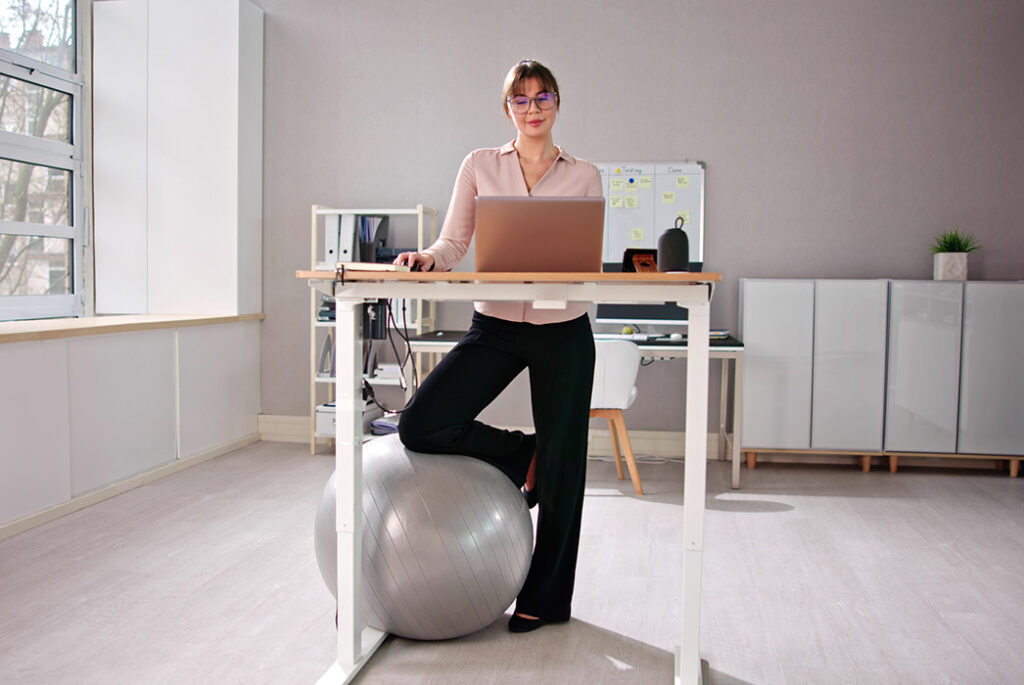As the modern workplace evolves, so too do the options for creating a more ergonomic and health-conscious environment. Among the many considerations facing today’s professionals, the debate between standing desks and sit-stand converters remains a prominent topic. Should you invest in a new standing desk or opt for a sit-stand converter to retrofit your existing workspace? Let’s explore the factors to consider when making this decision.
New Desk, New Possibilities: Standing Desk
- Integrated Ergonomics: Standing desks offer a holistic approach to ergonomic design, providing adjustable height settings, built-in keyboard trays, and ample desk surface area. This comprehensive setup promotes proper posture, reduces strain on the body, and supports optimal workflow efficiency.
- Stability and Safety: For those considering incorporating a walking treadmill into their workstation or requiring maximum stability for heavy monitor setups, a standing desk provides the necessary support and security. With a wider range of height adjustment and sturdy construction, standing desks offer peace of mind and a stable foundation for productive work.
- Customization and Flexibility: Investing in a standing desk allows for greater customization and personalization of your workspace. From selecting the perfect desk size and finish to adding accessories like monitor arms and cable management solutions, you have the freedom to create a tailored setup that meets your specific needs and preferences.
- Long-Term Health Benefits: By promoting regular movement and better posture, a standing desk contributes to long-term health and well-being. Reduced risk of sedentary-related health issues, improved circulation, and increased energy levels are just a few of the benefits associated with standing desk usage.
Adapting Your Workspace: Sit-Stand Converter
- Preserving Existing Furniture: Sit-stand converters offer a convenient solution for those who wish to maintain their current desk setup while gaining the benefits of adjustable height functionality. By placing a converter on top of your existing desk, you can transform any workspace into a more ergonomic and dynamic environment without the need for costly renovations or replacements.
- Cost-Effective Option: For budget-conscious individuals or those with limited space, sit-stand converters provide a more affordable alternative to purchasing a new standing desk. With a wide range of options available at varying price points, you can find a converter that meets your needs without breaking the bank.
- Ease of Installation: Unlike standing desks, which require assembly and potentially disassembly of existing furniture, sit-stand converters can be quickly and easily installed on any surface. This simplicity makes them an attractive option for those seeking a hassle-free ergonomic solution.
- Flexibility for Different Workspaces: Sit-stand converters offer versatility and adaptability, making them suitable for a variety of work environments. Whether you’re working in a cubicle, home office, or shared workspace, a converter allows you to customize your setup and adjust your workstation to suit your changing needs.
In conclusion, the choice between a standing desk and a sit-stand converter ultimately depends on your individual preferences, budget, and workspace requirements. While standing desks offer comprehensive ergonomic benefits and long-term health advantages, sit-stand converters provide a cost-effective and flexible solution for retrofitting existing workspaces. Whether you’re looking to create a brand-new ergonomic workstation or enhance your current setup, both options offer opportunities to prioritize your health and productivity in the modern workplace






